This easy cast iron peach cobbler is everything a summer dessert should be: juicy, warm, buttery, and topped with golden biscuit goodness. It’s the kind of rustic, crowd-pleasing treat you can throw together in one pan with pantry staples and ripe peaches.
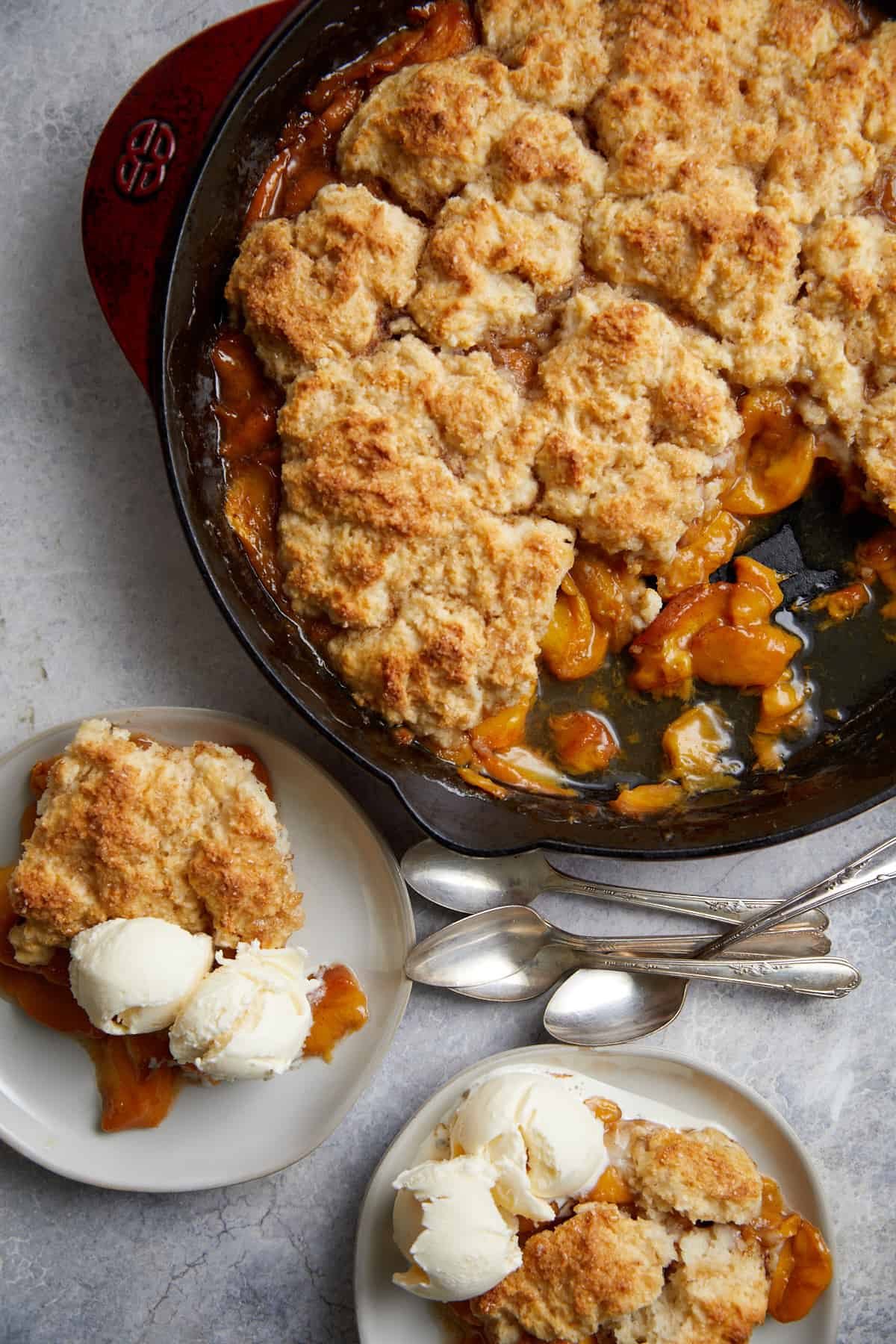
Save this Recipe!
I got A LOT of peaches at my local farm. I bought their “seconds,” which are peaches that may have minor bruising or other imperfections, but they’re still perfectly edible and great for baking. I took them home, peeled them, sliced them, and froze them in batches. So, you’re going to see several peach desserts popping up on the site, like my Cherry and Peach Cobbler, Peach Cherry Crisp, and Peach Cobbler Pound Cake. Fruit desserts are my absolute favorite!
INGREDIENTS NEEDED
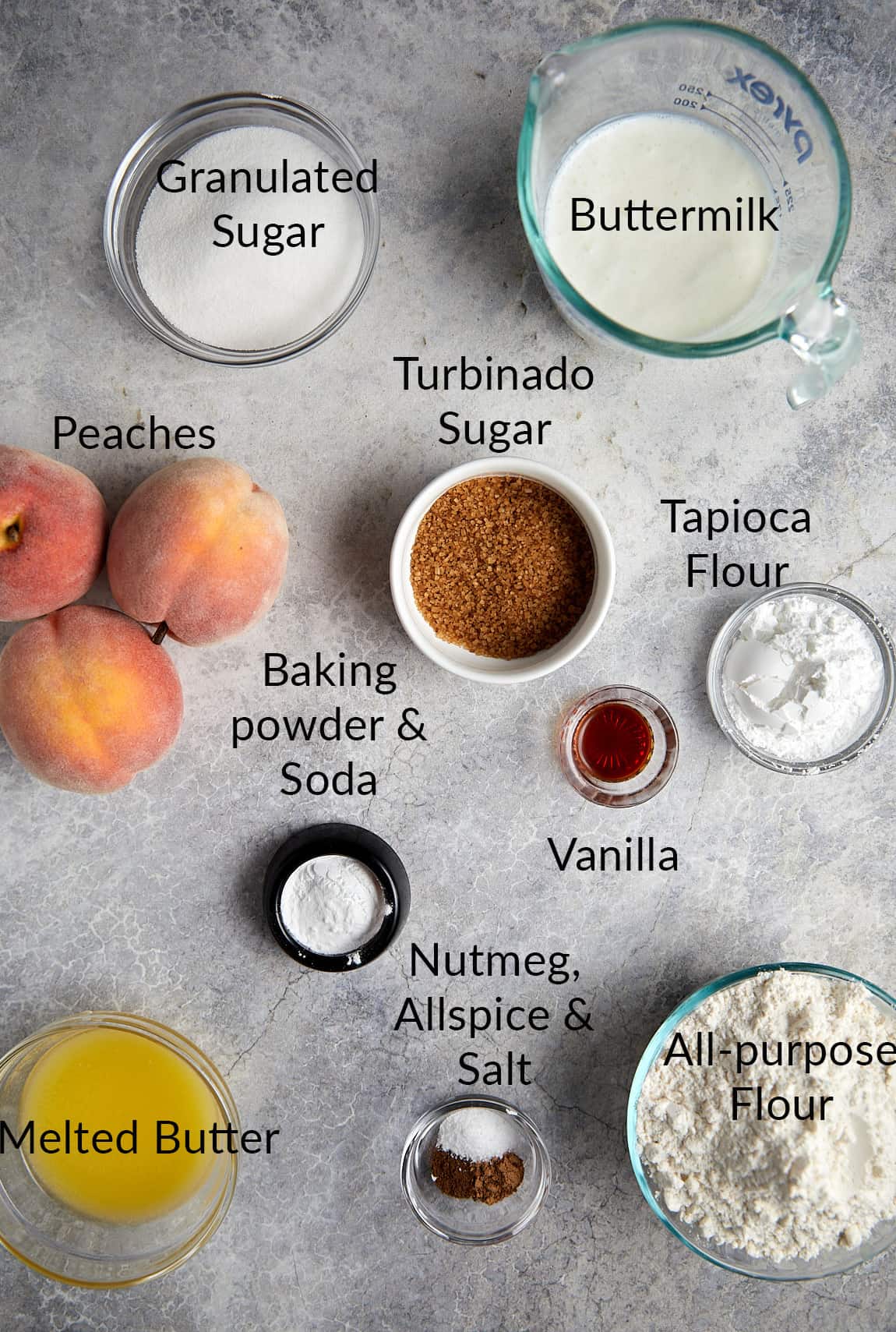
- Sliced Peaches: Fresh peaches at their peak are everything here! Look for ones that give slightly when pressed near the stem and smell fragrant. You’ll need 7-8 ripe peaches (about 6 cups sliced). I do peel them, see recipe card for an easy way to remove the skins.
- Sugar: You’ll need sugar in two places – for the peaches and the biscuit topping. Taste your peach mixture and adjust the sugar based on how sweet your fruit is!
- Vanilla, allspice, nutmeg, and salt all contribute to the flavor of the peaches.
- Tapioca starch: This is my secret for avoiding gloppy, thick filling! It creates a delicate, clear gel that lets the peach flavor shine. I recommend Bob’s Red Mill brand. Can’t find it? Use 2 tablespoons of cornstarch instead.
- Melted Butter: I used unsalted butter, which I typically use in most baking, allowing you to control the salt.
- Buttermilk: The acidity reacts with the baking powder to create incredibly fluffy biscuits. Don’t skip this!
- Turbinado sugar: Sprinkled on top, this gives you that irresistible crunchy texture that makes everyone ask “what’s your secret?”
See recipe card below for a full list of ingredients and measurements.
Peach Selection Guide
- Ripeness test: Gently press near the stem end – it should give slightly without being mushy.
- Fragrance check: Ripe peaches have a sweet, floral aroma at the stem end
- Variety matters: Freestone peaches (like Elberta or Red Haven) are easier to pit and slice than clingstone varieties.
- Peak season: Look for locally grown peaches from June through September for best flavor.
- Ripening at home: Place firm peaches in a paper bag at room temperature for 2-3 days to ripen.
How to Make Cast Iron Peach Cobbler
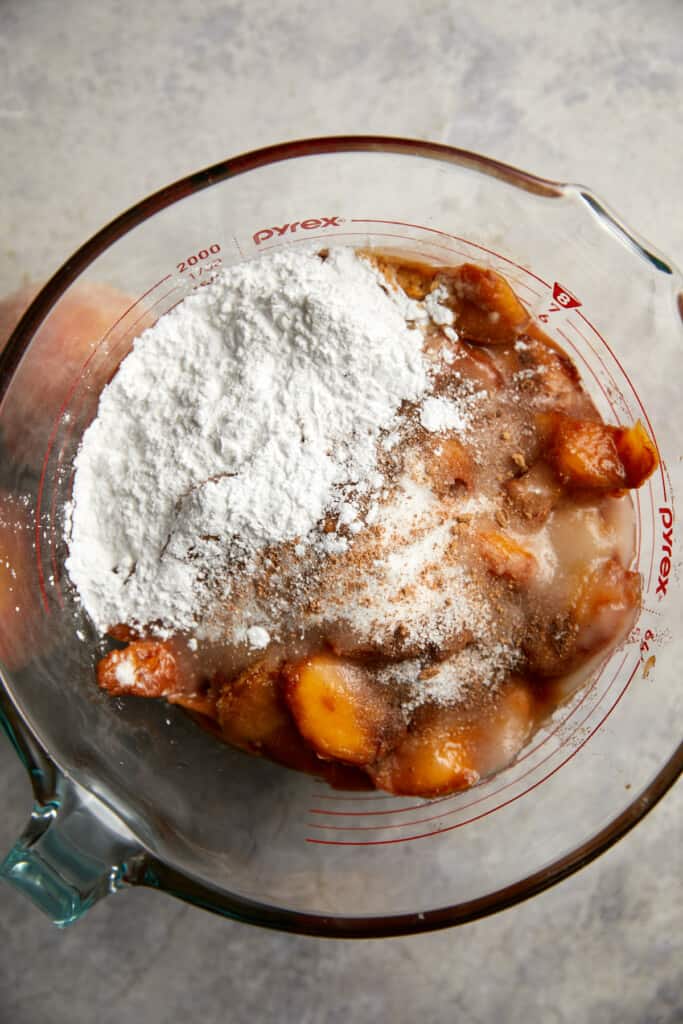
Step 1: Mix the peaches with sugar, tapioca starch, vanilla, allspice, nutmeg, and salt together in a medium-sized bowl.
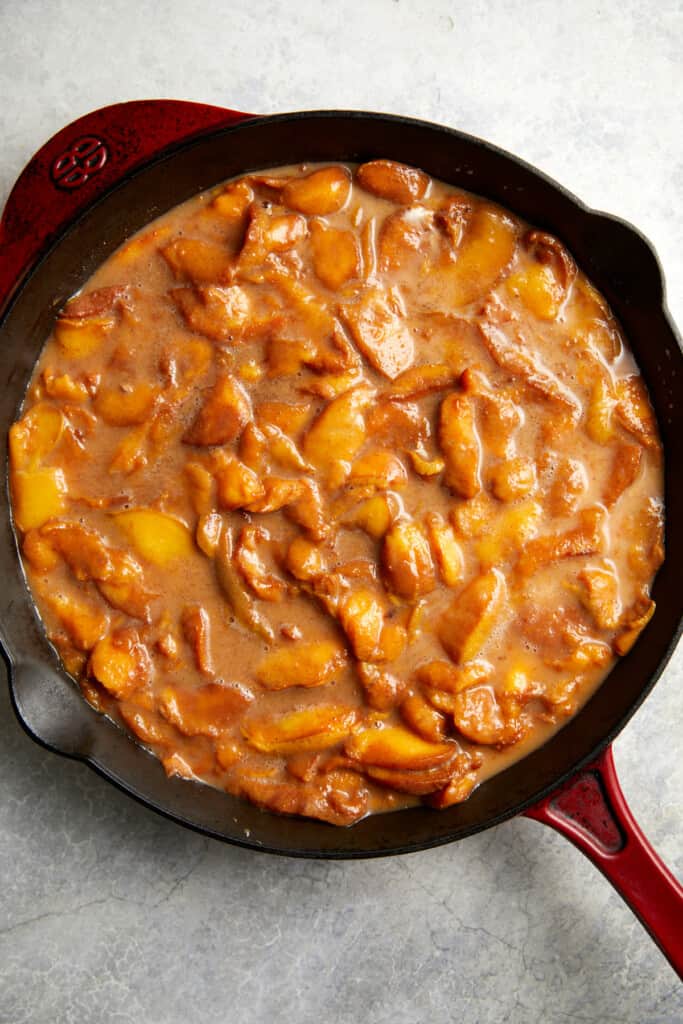
Step 2: Transfer the mixture to a 12-inch cast-iron skillet.
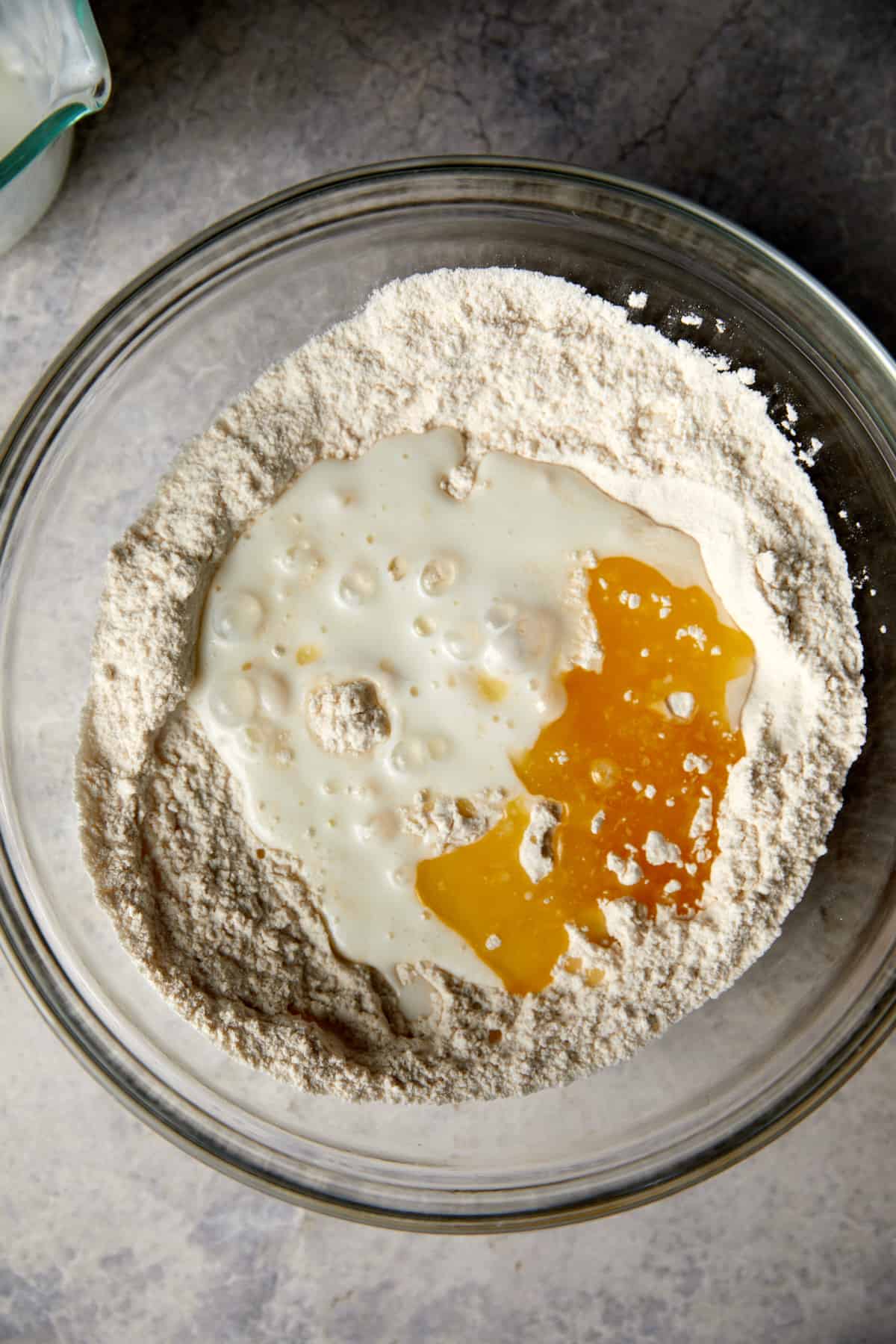
Step 3: Whisk flour, granulated sugar, baking powder, baking soda, and salt together in a medium bowl. Add buttermilk and melted butter.
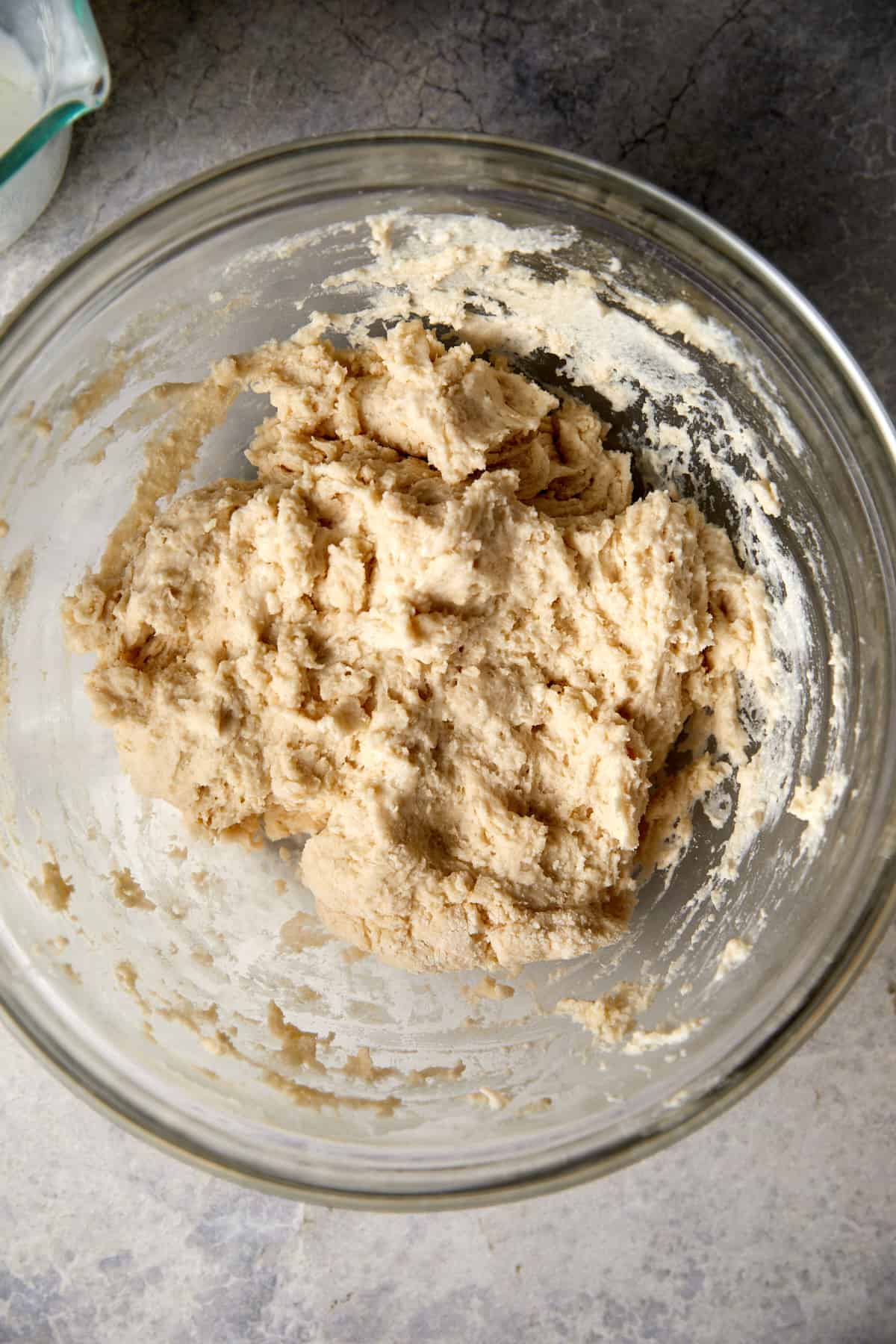
Step 4: Stir in buttermilk and melted butter until just combined.
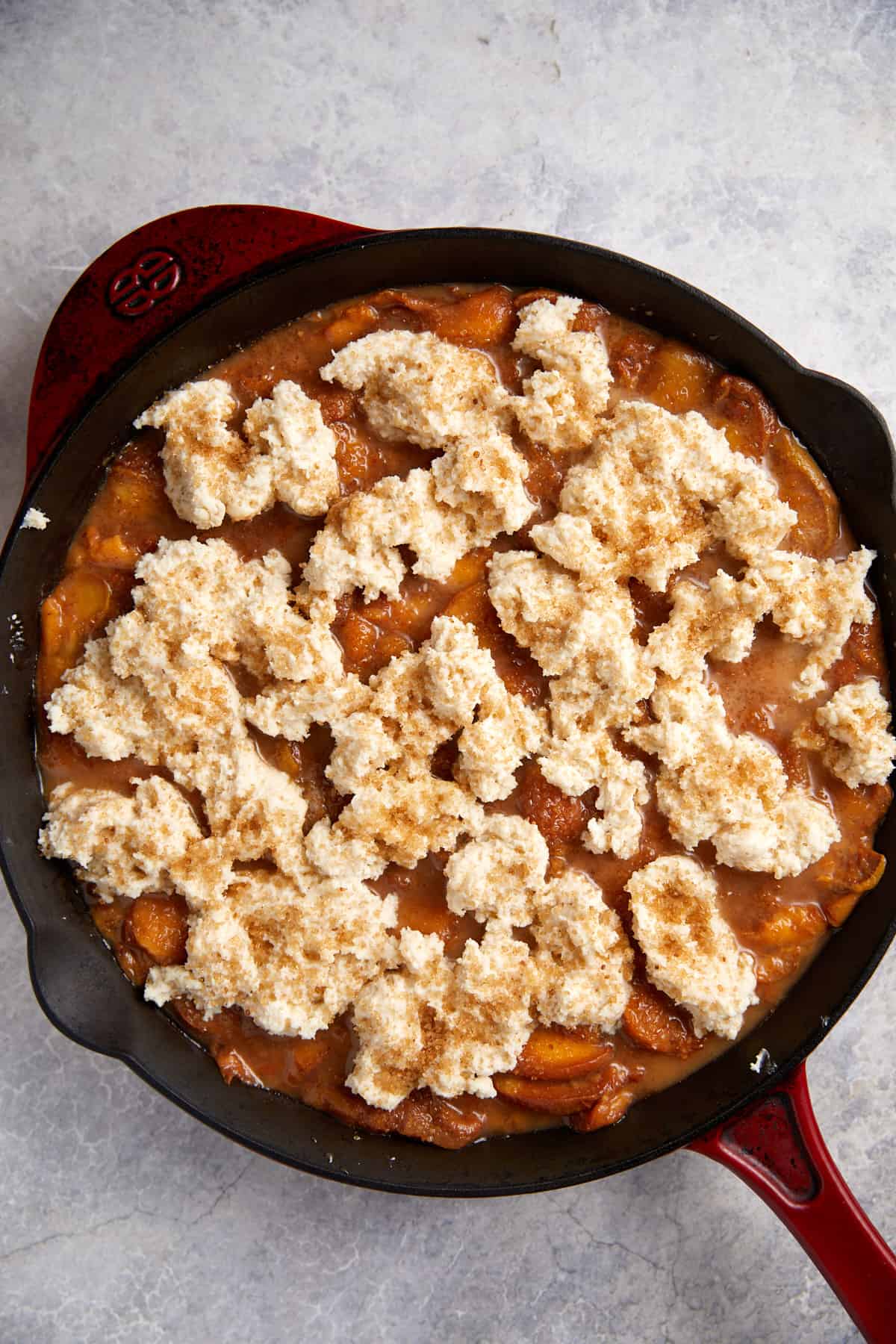
Step 5: Using a spoon or a cookie scoop, scoop out and drop 1-inch pieces of dough onto the filling, spaced about 1/2 inch apart. Sprinkle biscuit topping with the turbinado sugar.
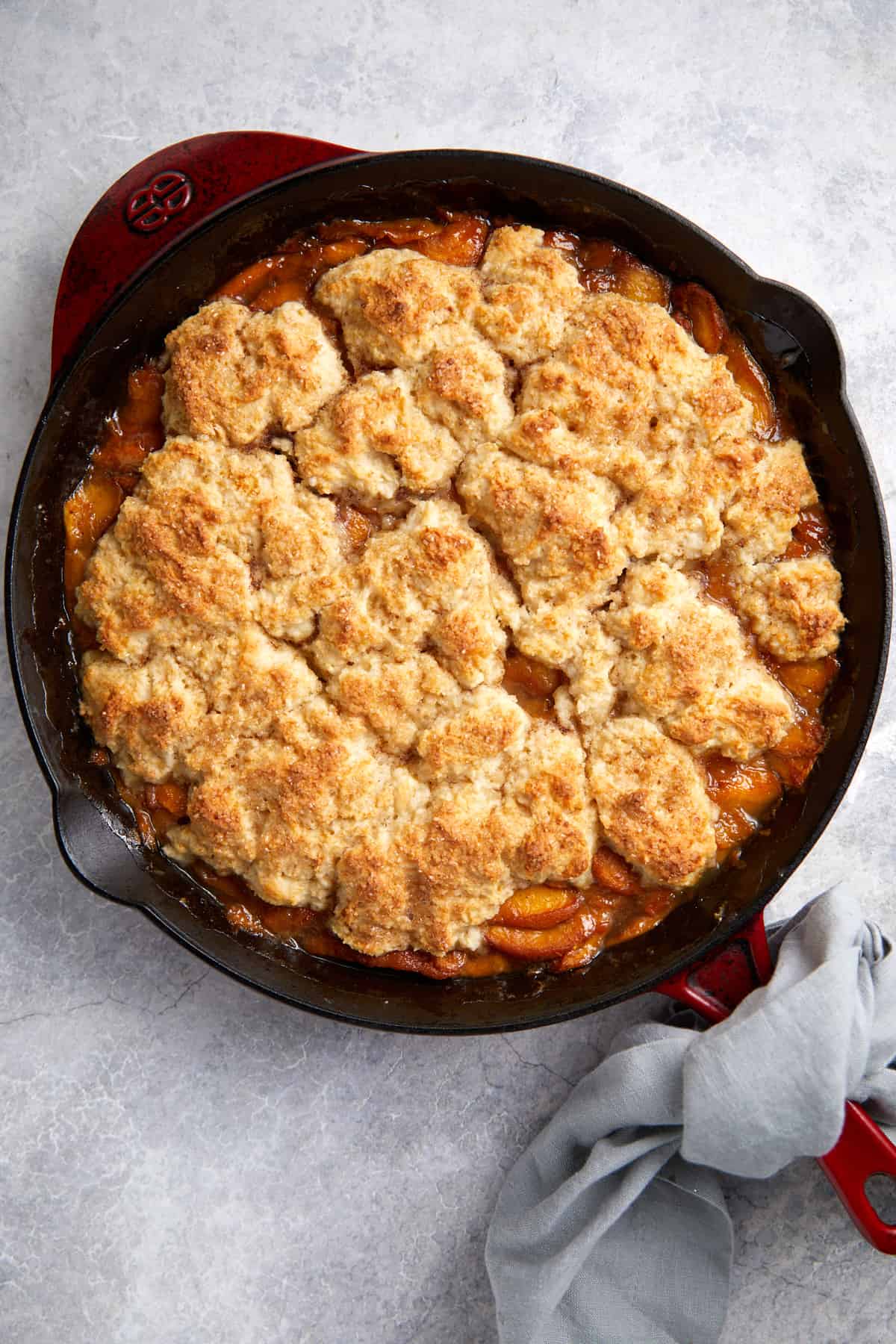
Step 6: Transfer the skillet to a 400°F (204°C) oven and bake until the biscuits are golden brown and the filling is thick and glossy, 30 to 35 minutes, rotating the skillet halfway through baking.
Why Cast Iron Makes the Best Cobbler
- Even heat distribution: Cast iron eliminates hot spots that can burn your cobbler, ensuring perfectly golden biscuits and evenly cooked fruit.
- Superior heat retention: Keeps your cobbler warm throughout serving, so the last person gets it just as hot as the first.
- Enhanced caramelization: Creates beautiful browning on the bottom and edges that develops deeper, richer flavors.
- Oven-to-table elegance: Serves directly from the skillet for that rustic, restaurant-quality presentation.
- Versatility: Works on stovetop, in oven, and even over a campfire.
Pro Tips & Variations
- If you don’t have a cast iron skillet:
- 9×9-inch baking dish: same bake time (30-35 minutes)
- Individual ramekins: Divide among 8 ramekins, reduce to 20-25 minutes
- Dutch oven: Same timing as cast iron, excellent for outdoor cooking
- Fresh peaches are best for flavor and texture. If you try frozen or canned peaches, adjust the sugar and bake time. (Frozen: bake a few extra minutes. Canned: drain well and reduce sugar.)
- Add a twist with a splash of bourbon, a pinch of nutmeg, or a handful of blueberries.
- Make it gluten-free by swapping in a 1:1 gluten-free baking flour for the topping.
Serving & Storage
- Serve this warm cast-iron peach cobbler with your favorite topping, such as vanilla ice cream or whipped cream.
- Make-Ahead: Make-Ahead Strategy
- Day before: Mix all dry ingredients for biscuit topping and store covered
- Morning of: Prepare peach mixture, but don’t combine with topping until ready to bake
- Best timing: Assemble and bake the same day for optimal biscuit texture
- Perfect reheating: 350°F oven for 10-15 minutes beats microwave every time – maintains crispy topping
- Freezing Instructions: Freeze leftovers in an air-tight container for up to 3 months. Thaw in the fridge and warm in the oven before serving.
- Store any remaining cobbler in an airtight container in the fridge and reheat as needed in the oven or microwave.

Common Questions
Too much liquid: If you added too much liquid to the filling, or if the peaches were very ripe and released a lot of juice, this can make the cobbler filling too watery.
Underbaking: If you didn’t bake the cobbler long enough, the filling may not have thickened, and the biscuit topping may not have crisped up properly.
Too much topping: If you added too much biscuit topping to the cobbler, it may not have been able to cook and crisp entirely in the oven.
This recipe was tested using only fresh peaches. While frozen or canned may work, results can vary. If using canned, be sure to drain thoroughly. For frozen items, don’t thaw first; add extra baking time.
Peeled peaches give you a smoother filling, while unpeeled ones add more texture and flavor. If you leave the skins on, wash them thoroughly, and consider chopping the peaches into smaller pieces, as the skins can become a bit chewy when baked.
Expired leavening: Check that your baking powder and baking soda are fresh (replace every 6-12 months). Overmixing: Stir the biscuit batter just until combined; lumps are okay, but overmixing creates tough, dense biscuits. Temperature shock: Make sure your oven is fully preheated to 400°F before baking.
Peach ripeness varies: Very ripe peaches need less added sugar, while underripe ones need more. Taste and adjust: Always taste your peach mixture before baking and adjust sugar by 2-4 tablespoons as needed.
Cast iron hot spots: Rotate the skillet halfway through baking (as directed) to ensure even browning. Oven rack position: Use the center rack for most even heat distribution. Oven calibration: Check your oven temperature with a thermometer – many run 25°F hot or cold.
Recipe
Cast Iron Peach Cobbler
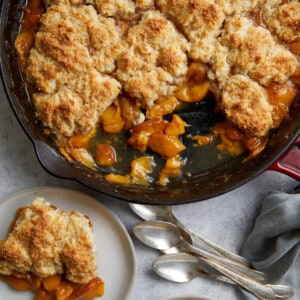
Equipment
- 1 12 inch cast iron pan
Ingredients
- 6 cups peeled and sliced peaches (7-8 peaches)
- ½ cup 100 grams granulated sugar
- 1/4 cup (28 grams) tapioca starch or 2 tablespoons corn starch
- ½ teaspoon vanilla extract
- ½ teaspoon all spice
- ¼ teaspoon nutmeg
- ½ teaspoon diamond crystal kosher salt or 1/4 teaspoon table salt
Biscuit Topping
- 1 ½ cup (213 grams) all- purpose flour
- 5 tablespoons (64 grams) granulated sugar
- 1 ½ teaspoon baking powder
- ¼ teaspoon baking soda
- 1/2 teaspoon diamond crystal kosher salt or 1/4 teaspoon table salt
- ¾ cup buttermilk
- 4 tablespoons melted butter
- 2 tablespoons turbinado sugar
Instructions
- Adjust oven rack to middle position and heat oven to 400°F (204°C).
- Stir peaches, sugar, tapioca starch, vanilla, allspice, nutmeg, and salt together in bowl until combined.
- Transfer mixture to 12-inch cast-iron skillet.
Biscuit Topping
- Whisk flour, granulated sugar, baking powder, baking soda, and salt together in medium bowl.
- Stir in buttermilk and melted butter until just combined.
- Using spoon, scoop out and drop 1-inch pieces of dough onto filling, spaced about 1/2 inch apart.
- Sprinkle biscuits with turbinado sugar.
- Transfer skillet to oven and bake until biscuits are golden brown and filling is thick and glossy, 30 to 35 minutes.
- Serve with vanilla ice cream! Enjoy!

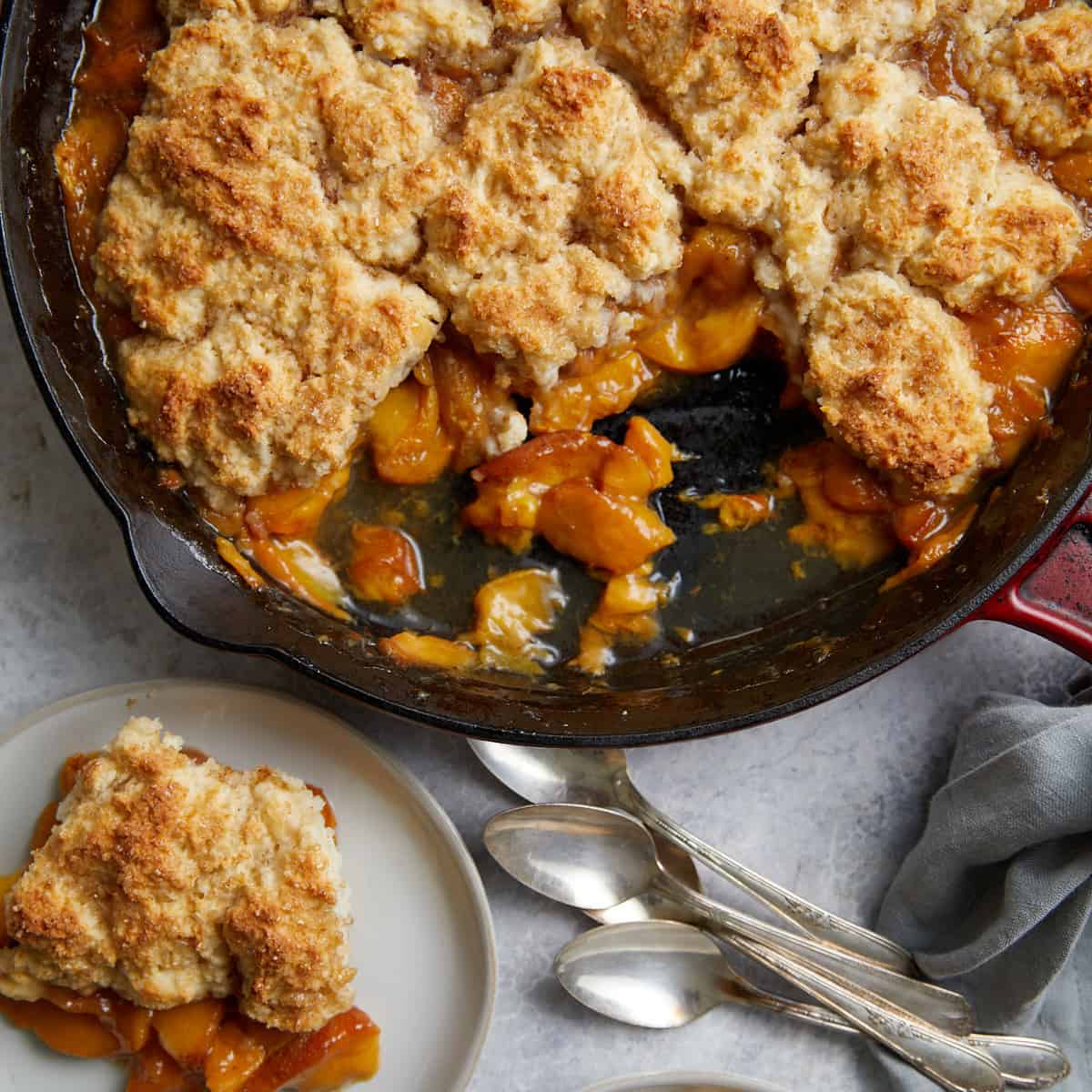
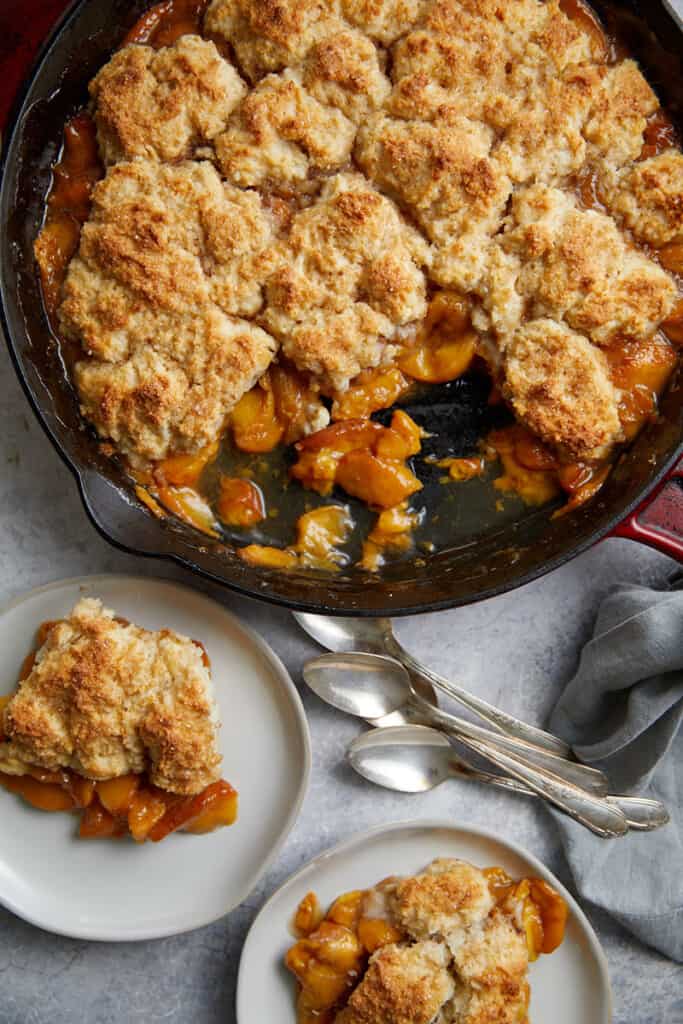
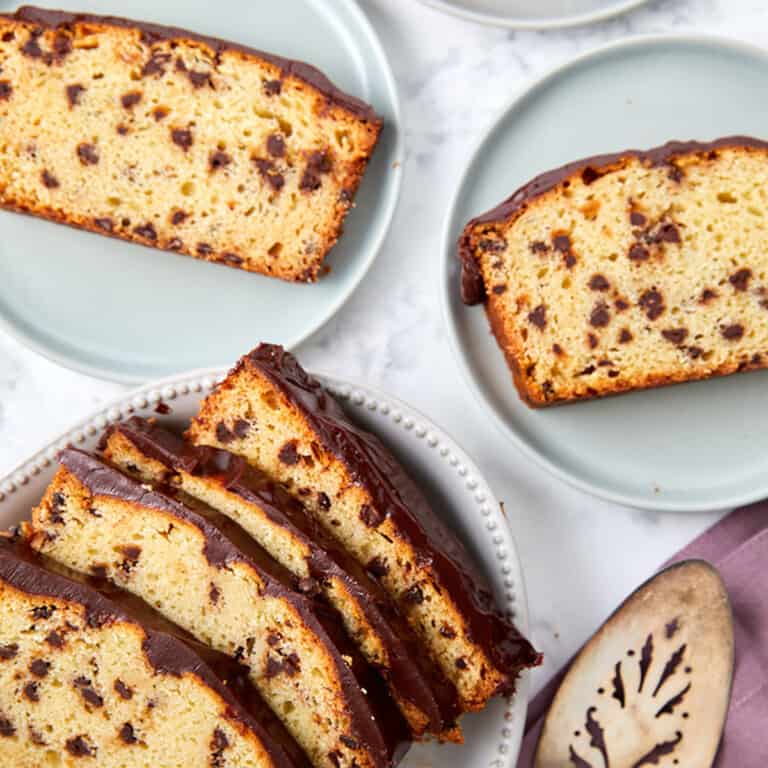
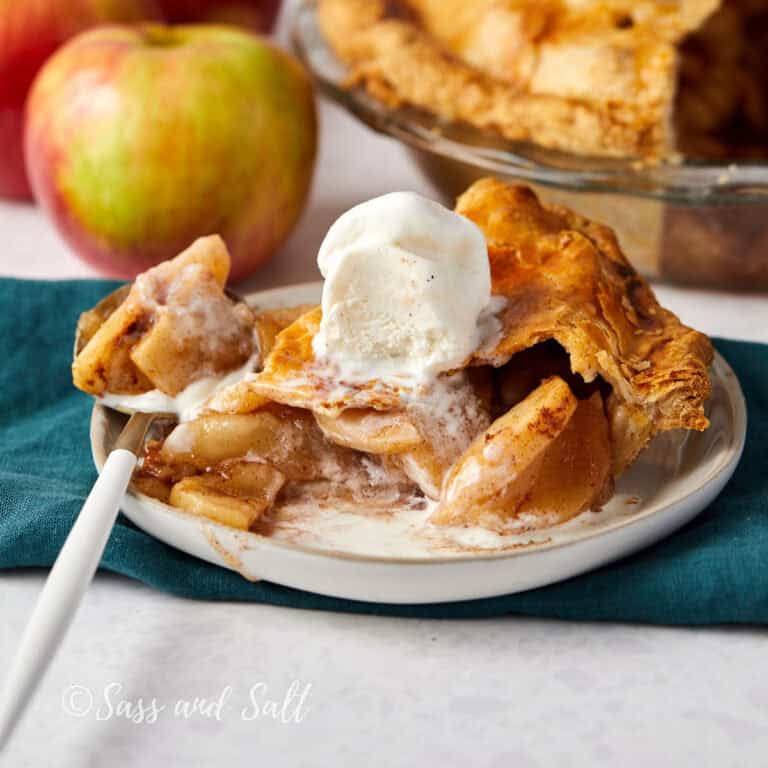
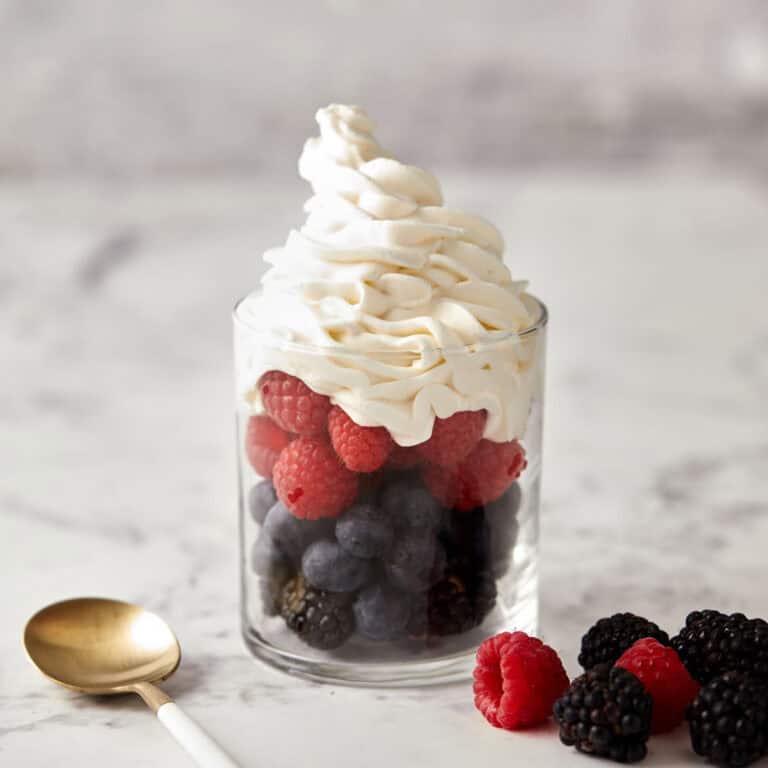
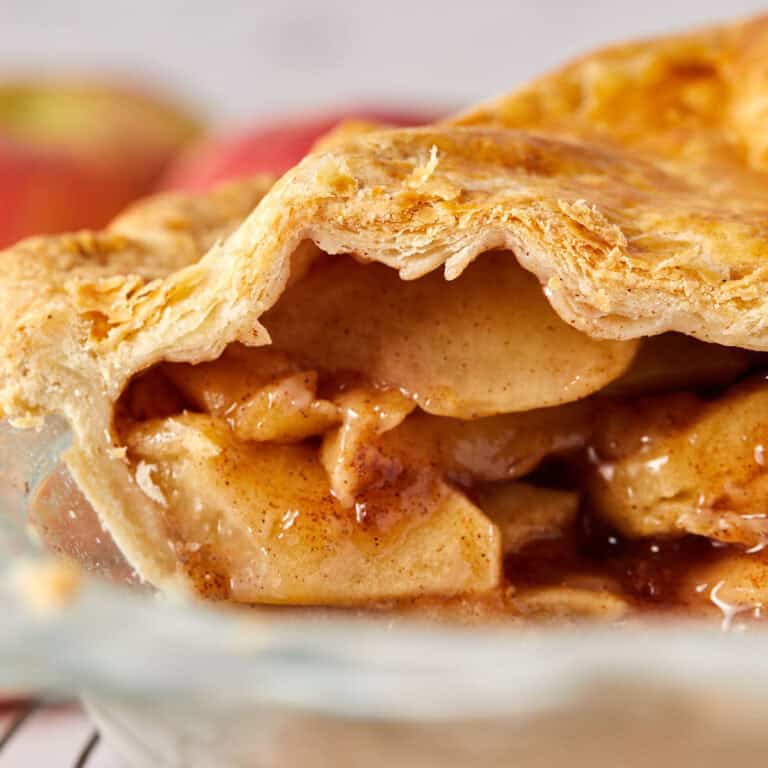
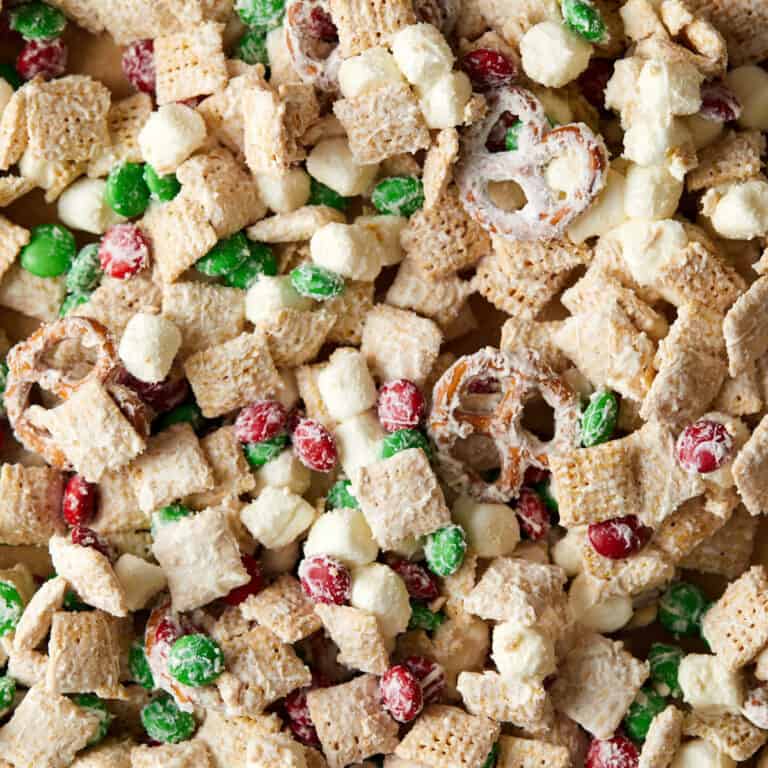

Delish. Easy to prepare.
A big time hit! I used the buttermilk substitute
The best peach cobbler I have ever had!!!